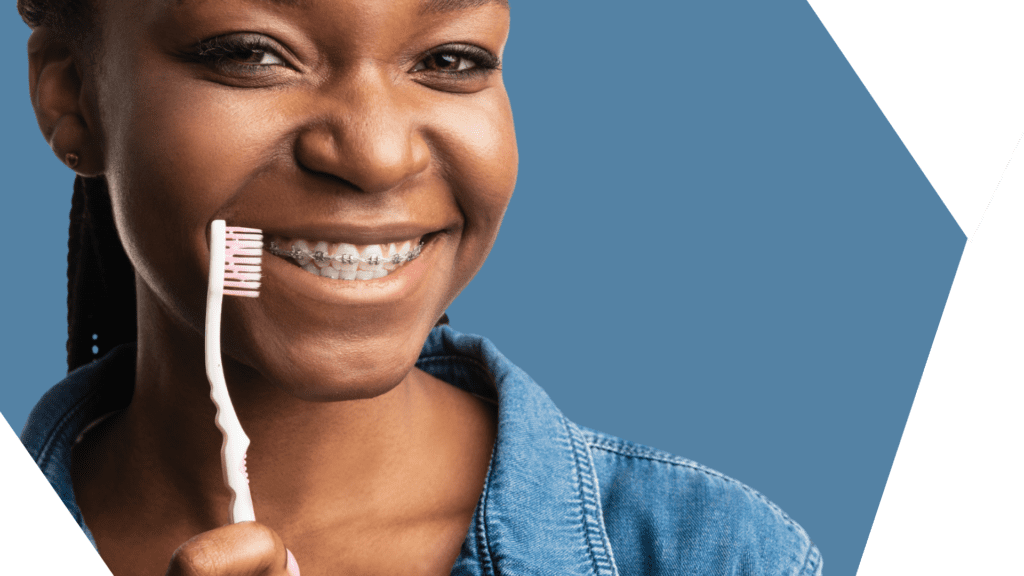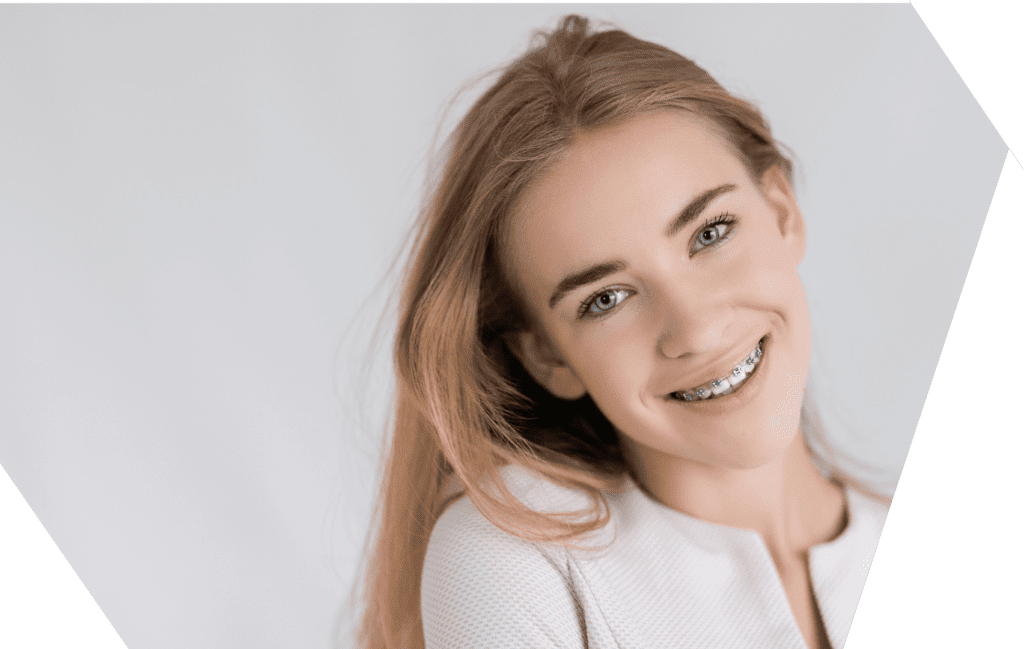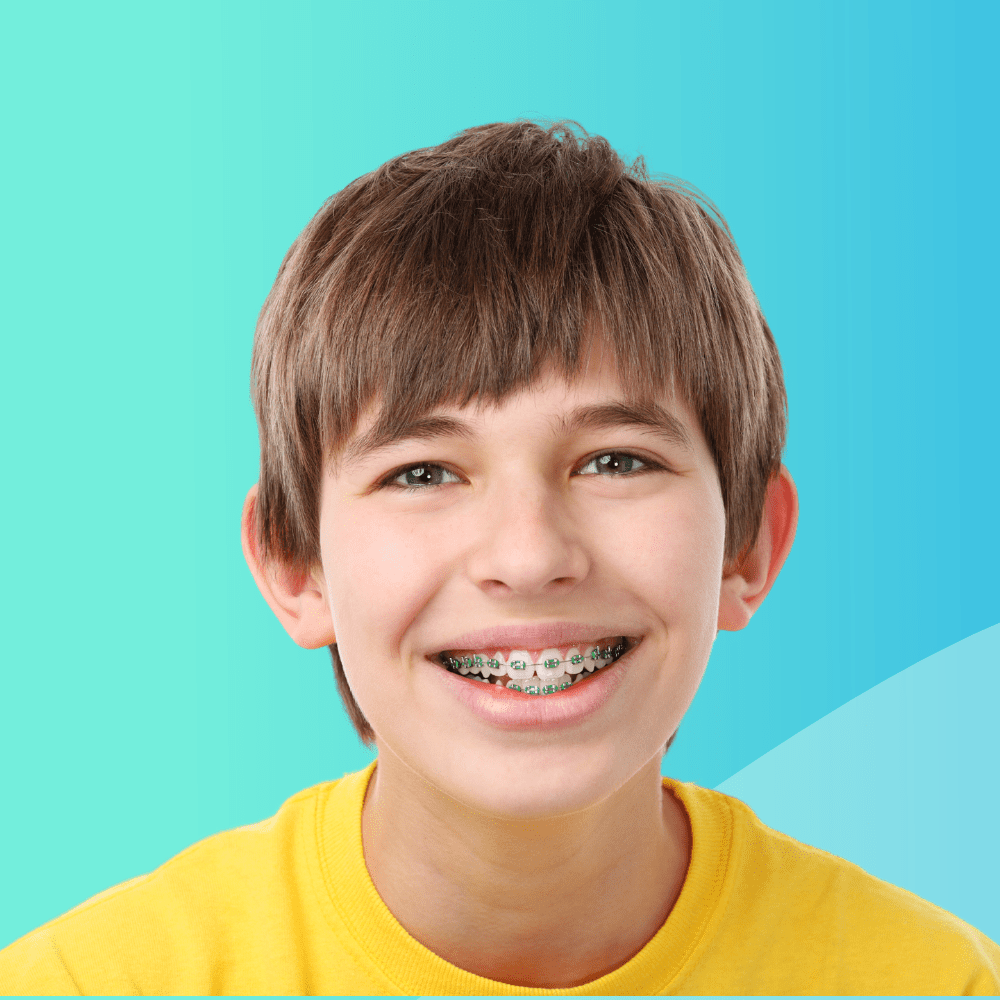Now that your braces are in place, it is very important to maintain a good oral hygiene regimen throughout the length of your treatment. Braces, wires, bands and retainers can all trap food particles and make it difficult to brush or floss away plaque. Careful brushing and flossing, preferably after every meal and snack, is the best way to prevent plaque build-up, tooth decay and gum disease.
To avoid these problems while you are in orthodontic treatment, take special care of your braces, teeth and gums by brushing and flossing daily and avoiding foods that could damage your braces. Following these directions will help your treatment plan stay on track, cut back on trips to the orthodontist for repairs, and can reduce treatment time. Watch the video below for more tips on how to keep your braces in tip-top shape!

Brushing While Wearing Braces
Use a toothbrush with soft bristles and a small strip of fluoride toothpaste. When you brush your teeth, move the brush in small, circular motions to reach food particles that may be under your gum line. Hold the toothbrush at an angle and brush slowly and carefully, covering all areas between teeth, between braces and the surface of each tooth. It will take you several minutes to thoroughly brush your teeth. Brush up on the lower teeth, down on the upper teeth and the outside, inside and chewing surface of your front and back teeth. Brush your tongue and the roof of your mouth before you rinse.
Especially during orthodontic treatment, brush your teeth four times daily to avoid the accumulation of food particles in your teeth and braces:
- In the morning after breakfast
- After lunch or right after school
- After dinner
- At bedtime
You will need to replace your toothbrush more often due to your appliances. As soon as the bristles start to wear down or fray, replace your toothbrush with a new one. It may be difficult for your toothbrush to reach some areas under your archwire. Do not swallow any toothpaste; rinse your mouth thoroughly with water after you finish brushing. It is important to floss, use an antibacterial mouthwash and use a fluoride treatment for optimal oral hygiene.
Flossing With Braces
Flossing takes more time and patience when you are wearing braces, but it is important to floss your teeth every day. We recommend flossing at night to make sure your teeth are clean before you go to bed. Flossing reaches areas between the teeth that a toothbrush can’t and removes food particles and plaque.
Use a reusable floss threader to floss under your archwire. daily Pull a small length of floss from the dispenser through the threader, and slide it up and down along the front of each tooth. Use care around your archwire, and do not floss too forcefully around it or put too much pressure on it. You will be able to feel when the tooth is clean and hear the squeak of the floss against your clean teeth. After you floss between your archwire and braces, floss between your other teeth and gums
If you are flossing without a floss threader, pull a small length of floss from the dispenser. Wrap the ends of the floss tightly around your middle fingers. Guide the floss between all teeth to the gum line, pulling out food particles or plaque. Unwrap clean floss from around your fingers as you go, so that you have used the floss from beginning to end when you finish. Floss behind all of your back teeth. When you first begin flossing around your braces, your gums may bleed a little. If the bleeding does not stop after the first few times flossing, please inform a staff member at your next appointment.
Offering Interest-Free Payment Plans
Your First Visit Is On Us!
Foods to Avoid to Protect Your Braces
While you are wearing braces, please avoid eating hard foods, sticky foods and foods high in sugar. Hard foods can break or damage the wires and brackets, and sticky foods can get caught between the wires and brackets. Minimize the amount of sugary foods you eat; the sugar can cause tooth decay and other related problems.
Examples of Sticky Foods to Avoid:
- Gum (sugar-free or regular)
- Licorice
- Sugar Daddies
- Toffee
- Tootsie Rolls
- Caramels
- Starburst
Examples of Hard Foods to Avoid:
- Ice
- Nuts
- Hard taco shells
- French bread crust/rolls
- Corn on the cob
- Apples and carrots (unless cut into small pieces)
- Bagels
- Chips
- Jolly Ranchers
- Pizza crust
- Uncooked carrots (unless cut)
Minimize Sugary Foods like:
- Cake
- Ice Cream
- Cookies
- Pie
- Candy
Eat These Foods Only Once A Day:
- Soda
- Sweetened tea
- Gatorade
- Kool-Aid
- Drinks with sugar
We encourage patients to quit bad habits, such as fingernail biting, pencil and pen chewing and chewing on foreign objects. All of these activities can break or damage your braces.
It’s important to regularly check your braces for bent or loose wires and brackets. If you have a loose/broken wire or bracket, please call our office immediately to arrange a repair appointment.
Rinsing with an Antibacterial Mouthwash
To reduce inflammation to your gums and cheeks, we suggest using a hydrogen peroxide antiseptic mouth rinse. This rinse will help prevent infection and decrease irritation that may develop from your braces. Rinse your mouth with two teaspoons of the hydrogen peroxide rinse for one minute, and then spit it out. You may use it up to four times daily following brushing. Just like using peroxide for a scrape on your skin, this hydrogen peroxide mouth rinse helps the inside of your mouth heal. It can be used for general irritation caused by your braces or for canker sores, cheek bites and other minor injuries to the gums.
Using an Interdental Toothbrush
An interdental (between the teeth) toothbrush is used to clean underneath and around your archwires and braces. Please use the interdental toothbrush gently to avoid damaging your wires.

Topical Fluoride
We recommend using a sodium fluoride gel to help prevent tooth decay while you are wearing braces. This gel kills bacteria and replaces minerals in the tooth enamel that have been removed by harmful acids. Using a fluoride gel does not replace daily brushing and flossing, but it should be applied following your daily schedule at bedtime. Place a small strip of the gel on a toothbrush, and apply it to your teeth for one minute. Then spit it out. Do not eat or drink for 30 minutes afterward. It is important for the active ingredient to stay on your teeth for 30 minutes, so do not wash it away by eating, drinking or rinsing.
Cleaning Your Removable Appliance
Now that your braces are in place, it is very important to maintain a good oral hygiene regimen throughout the length of your treatment. Braces, wires, bands and retainers can all trap food particles and make it difficult to brush or floss away plaque. Careful brushing and flossing, preferably after every meal and snack, is the best way to prevent plaque build-up, tooth decay and gum disease.


